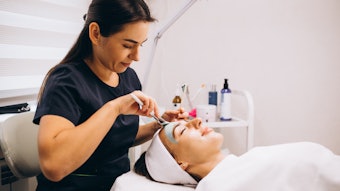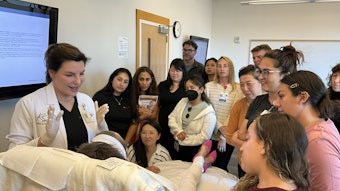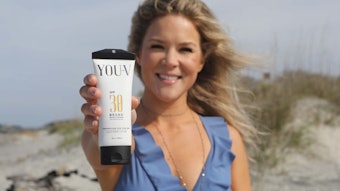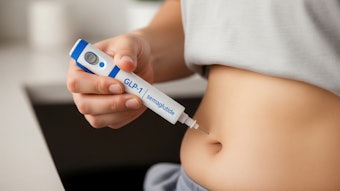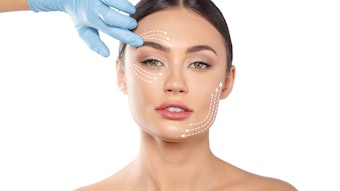
As our country and the world continue to navigate COVID, in many ways we are still processing the sudden upending of our lives during the lockdown periods in the early days. When we emerged from that pivotal time, many of us were happy and relieved for certain aspects of our lives to return to “normal.” At the same time, we found ourselves embracing some of the “new normals” we had discovered at this unique point in history, when many of our usual activities required reevaluation.
As a specialist in aesthetic medicine, I can certainly vouch for the impact I’ve seen in my practice, which has resulted in an unexpected organic growth. This is largely due to an increased demand for long-lasting dermal fillers that we provide, which offer results for up to five years.
Over the last 20 years, the popularity of dermal fillers has grown significantly. Currently more than three million people receive injectable fillers each year, and those numbers are only expected to grow. One of the most popular types of dermal filler uses hyaluronic acid to add volume and smooth creases in the facial area. Results typically last for a period of 6 to 12 months, as over the course of time, the body begins to break down the HA. Patients who wish to maintain the look typically return to their doctor for touchups or additional injections once or twice each year.
Growing Patient Demand for Longer-Lasting Options
During the lockdown, as many patients experienced lags in their maintenance schedules and their ability to receive treatments, they became aware of the limitations of HA fillers and began to research longer-lasting options. Our practice has received a number of patients who left established providers in search of an aesthetic physician who could offer these more sustainable options. We have also seen an increase in naïve patients who have educated themselves prior to investigating any type of potential treatment and who are gravitating toward the longer-lasting options from the start. In a recent survey, 90% of regular dermal filler patients said they would be interested in an FDA approved five-year filler as a longer-lasting alternative.
The strong interest in long-lasting results has driven new patients into our practice regularly. The range of patients coming to us has varied. We have patients who have undergone one or two injections previously and are finding that they aren’t experiencing the same results over time because a larger volume of product is needed to achieve the same results. We see patients with acne scarring, who typically are good candidates for longer-lasting options, particularly if their indentations are rolling scars. We also have seen a significant increase in the number of couples who are committing to an improved look together. We are finding that men and women alike are becoming more open about having this type of work done. We know that a large part of this is the Zoom culture, as patients are spending more time on screens.
The biostimulatory aspect of longer-lasting fillers is appealing to patients. Not only do the results look very natural, but the volume correction is sustained over time with patients’ own collagen produced by their own bodies. The result is more reflective of the patient’s aesthetic needs and feels true to who they are.
Selecting a Longer-Lasting Option
Long-lasting fillers generally work to promote collagen stimulation in the patient’s body to enable more natural-looking results. In my practice, I use a range of fillers, but most often prefer to work with a filler comprised of 20% polymethylmethacrylate (PMMA) microspheres, suspended within a collagen gel base that makes up the remaining 80% of the product. The collagen gel base provides an immediate result, while the microspheres create a scaffold that stimulates collagen production as fibroblasts migrate in and around the microspheres. In our practice, we have noticed that in addition to the volume correction, patients also show an improved skin tone due to the improved blood flow and nutrition being delivered to the tissue.
As physicians, it is important to feel comfortable using the products we select. The biostimulatory filler I use most frequently, with its collagen base, has very supple and smooth properties. Because it is stored under refrigeration, then brought to room temperature, I am able to regulate its viscosity by allowing it to become warmer or less warm. I find I am most comfortable working with a slightly stiffer viscosity. However, it is an individual choice, and other aestheticians may be more comfortable with more fluidity. This benefit enables an element of artistic control not available in other products.
Safety is another key factor in selecting a long-term filler, and it is critical that we physicians review the data to ensure we are providing our patients with the best options. Current literature shows the PMMA biostimulatory filler to have the fewest complications compared to other options, and that has been my professional experience as well.
Finally, it is critical that injectors who use any of the longer-lasting filler products feel confident in the semi-permanent nature of the products. Understanding that within the larger field of medicine, many procedures, including surgeries, are performed with a level of permanence in mind, the more we can take on that mindset in the area of aesthetic medicine and the more we will elevate the art and practice of our medicine.
Creating Balance With Progressive Corrections
One of the most significant benefits of long-lasting fillers compared to more temporary solutions is the ability to do a progressive correction. In other words, I can develop treatment plans with my patients that enable me to start a correction and continue it over time without having to go back and redo parts because the result of the initial filler has sustained. I can build on the previous corrections, both to offset the patient’s normal aging and address other areas of concern.
This is important because when undertaking corrections, it is vital to consider the patient’s whole face and to create balance. I bring a unique perspective to this because of my history and entry into the aesthetics field.
When I first started in medicine, I was a naturopathic physician treating HIV and cancer patients. A couple of my HIV patients asked for my help because they were experiencing facial lipoatrophy, sometimes referred to as facial wasting. Although I did not have the background in aesthetics when they asked, I wanted to help, so I underwent training and was able to treat them with injectable fillers. They were delighted with the results. From an early age, I had been drawn toward art as well as science. Seeing the opportunity to combine my two strong interests and to change patients’ lives, my career took a new direction.
My early experiences with those and other HIV patients required me to inject large surface areas on the face. These cases trained my eye and led me to develop pan-facial treatment plans that accounted for the balance of the entire face, rather than focusing on one area, such as smile lines.
Using a long-lasting filler offers an advantage beyond extended results for specific areas by enabling patients to address areas they may never have been able to address in a cycle of maintaining previous injections. The durability of the result allows patients to progressively improve their overall look over time. Many people want natural results, but they also want the improvements to appear gradually. They want to be subtle about the fact that they are undergoing corrections as they work to achieve the result they ultimately want.
A Worthwhile Investment
Dermal fillers do require a financial commitment from patients. We are seeing more and more people who are willing to invest in this kind of care. Having access to progressive corrections while requiring less product overall compared to shorter-term fillers, improves the affordability for patients by spreading the financial requirements over time.
Recent studies with Botox have supported the idea that patients who look better feel better. We see that every day, and we are proud to be on the forefront of improving aesthetic care and satisfaction through longer-lasting corrective options.
J.D. McCoy, N.M.D., is one of the most accomplished naturopathic physicians practicing aesthetic medicine in the country. He is recognized as an innovator and physician trainer for multiple technologies and techniques in cosmetic medicine. He is an Advanced Injection Trainer and Physician Speaker for a number of manufacturers, including Suneva Medical, manufacturers of Bellafill. He is a Founding Board Member of the Naturopathic Physicians Board of Aesthetic Medicine and a Physician Member of American Academy of Cosmetic Surgery, American Academy of Aesthetic Medicine, American Society of Aesthetic Mesotherapy, International Federation for Adipose Therapeutics and Science. He was the first Naturopathic Physician to attain membership in the AACS.



